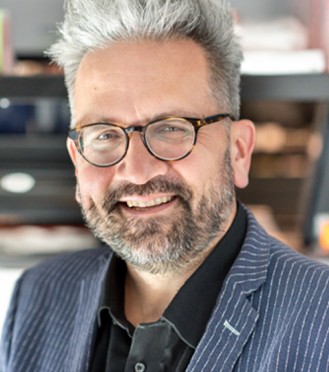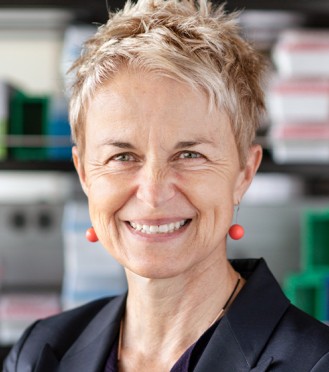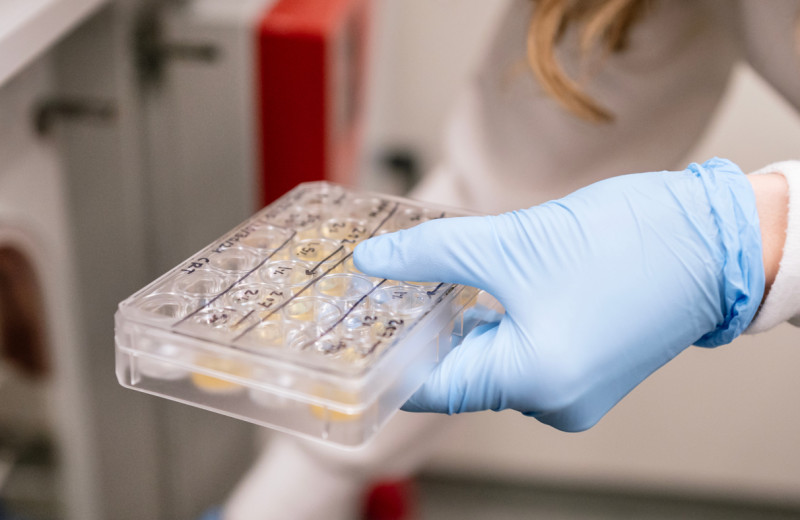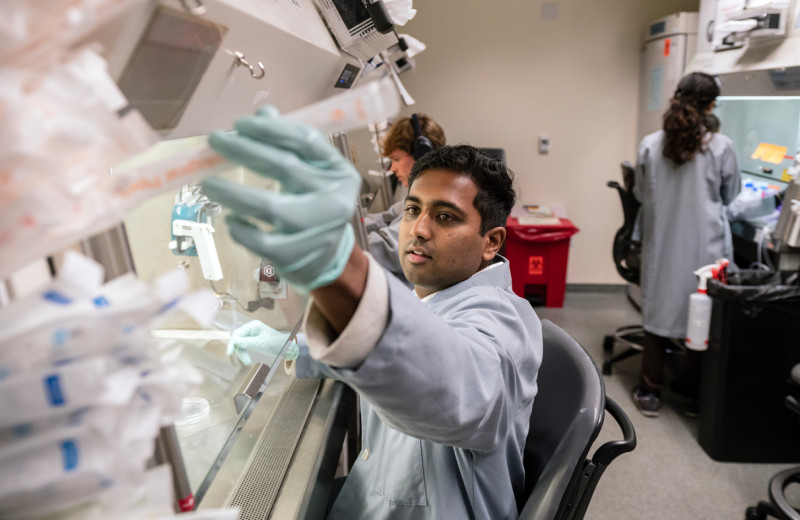Gladstone NOW: The Campaign Join Us on the Journey✕

Melanie Ott is part of a team of scientists from Gladstone and UC San Francisco who developed powerful drug candidates that could head off future coronavirus pandemics.
A team of scientists from Gladstone Institutes and UC San Francisco (UCSF) has developed new antiviral drug candidates that show great promise against SARS-CoV-2, the virus that causes COVID-19, and may also be effective against other less prevalent but much more deadly coronaviruses.
In preclinical testing, the compounds performed better than the antiviral drug Paxlovid against SARS-CoV-2 and Middle East Respiratory Syndrome (MERS), a virus that periodically causes deadly outbreaks around the world.
“These compounds could inhibit coronaviruses in general, giving us a head start against the next pandemic,” says Charles Craik, PhD, UCSF professor of pharmaceutical chemistry and co-corresponding author of the paper, which was published in Science Advances. “We need to get them across the finish line and into clinical trials.”
The discovery came out of UCSF’s Antiviral Drug Discovery (AViDD) Center for Pathogens of Pandemic Concern, which is led by Nevan Krogan, PhD, director of the UCSF Quantitative Biosciences Institute (QBI) and senior investigator at Gladstone.
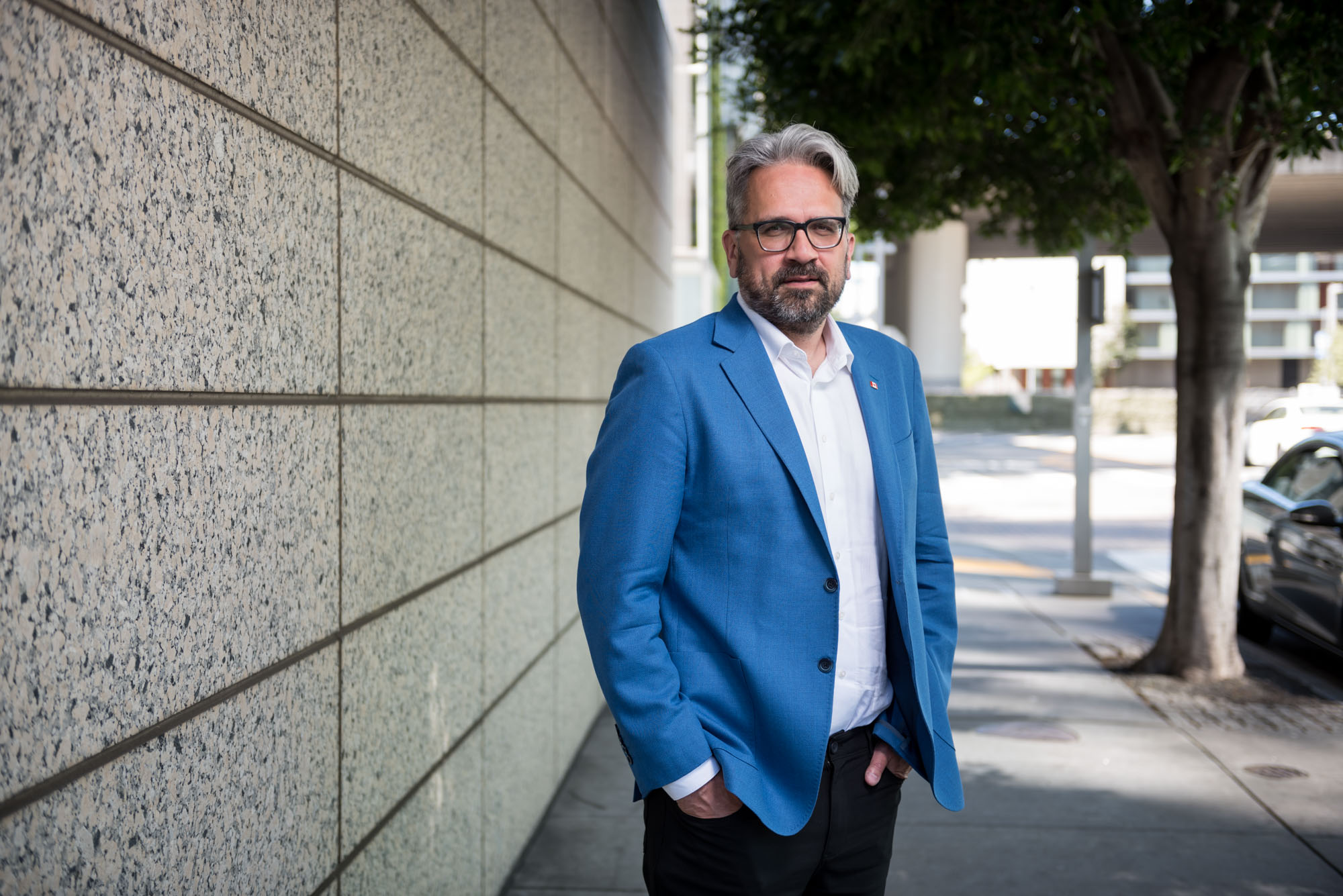
Krogan brought together researchers from over 40 labs to help find new drug candidates to treat SARS-CoV-2 and other coronaviruses.
From Virtual to Real-World Drug Candidates
Three years ago, the UCSF AViDD grant supercharged the efforts of the QBI Coronavirus Research Group (QCRG), which was founded in 2020 by Krogan. From this group, he assembled hundreds of scientists from 43 labs across UCSF, Gladstone, and a wide range of domestic and international institutions.
“COVID was our wake-up call to apply all our resources and know-how toward new therapies and future pandemic preparedness,” says Krogan, UCSF professor of cellular and molecular pharmacology, co-author of the paper, and a leading expert on the biology of infectious disease.
For the project that led to the new SARS-CoV-2 drug candidates, Krogan and Craik, who had experience designing drugs against HIV, partnered with Melanie Ott, MD, PhD, director of the Gladstone Institute of Virology, as well as the UCSF labs of Adam Renslo, PhD, Brian Shoichet, PhD, and Kliment Verba, PhD.
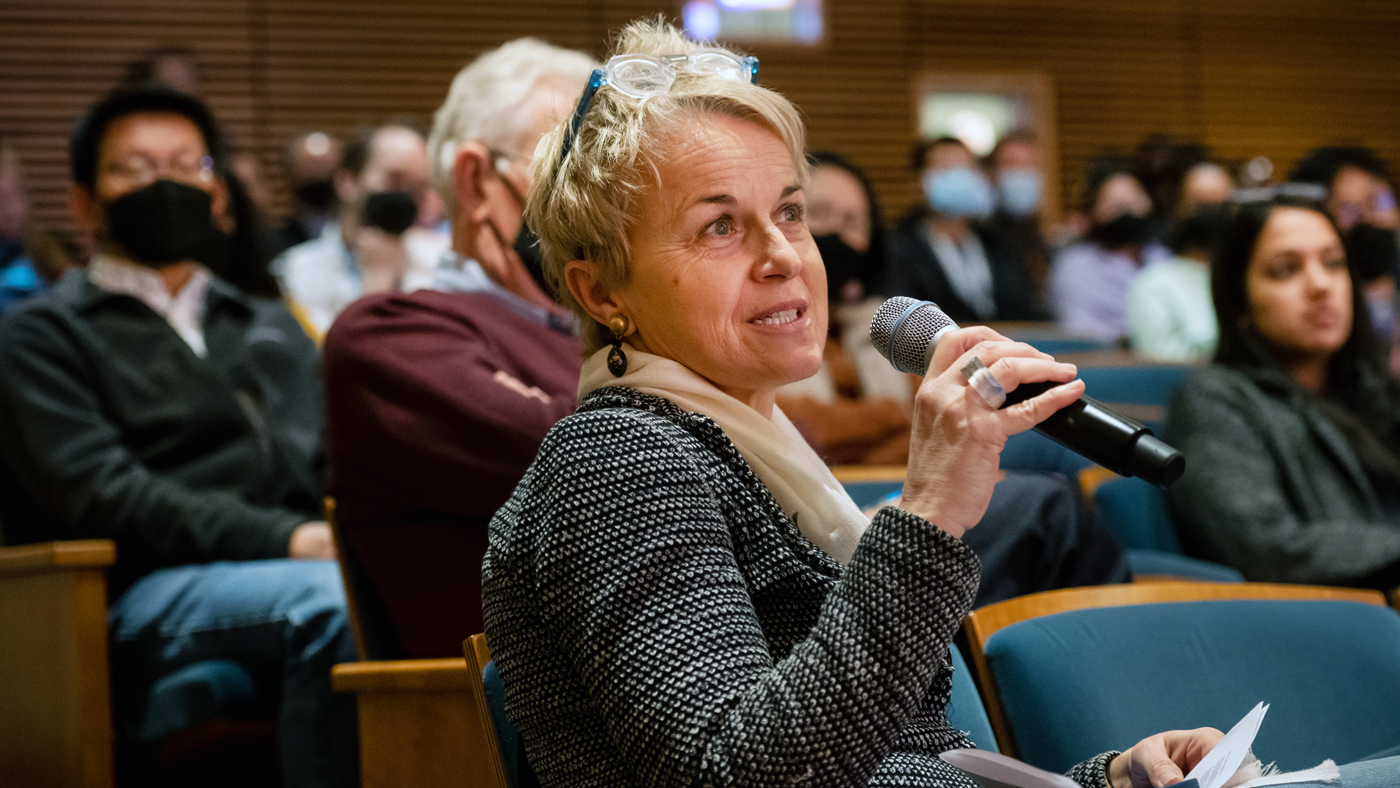
Ott, a virologist whose team has tested hundreds of drug candidates against SARS-CoV-2, helped test new molecules that seem promising as therapies to fight the next pandemic caused by a coronavirus.
The group focused on the major protease (MPro), a type of enzyme that breaks proteins into smaller pieces like a pair of molecular scissors. SARS-CoV-2 uses MPro to trim viral proteins into usable parts, which the virus then uses to replicate in human cells. Viral proteases have often been the target of attempts to make antiviral drugs, most notably for HIV.
The team first identified a few dozen molecular structures, out of millions, that mildly blocked MPro, providing a starting point for developing real-world drug candidates. They then synthesized hundreds of new molecules based on the virtual molecules, and tested them against MPro in the laboratory.
“We spent 18 months going back and forth with different molecules that fit reasonably well inside of MPro, but were still mediocre at blocking it,” Craik says. “Our progress stalled. Something had to give.”
After some time, the scientists found a way to make the molecules fit more snugly into the “active site” of MPro, blocking its ability to cut proteins, like jamming open a pair of scissors. Finally, the team found two molecules that weren’t just a perfect fit for MPro—they were glued within the jaws of the scissors.
“This was our lucky break and gave us some very special molecules,” says Craik. “They only react when they’re already inside this viral protease, but not to any of our own human proteases, giving us hope that they could have minimal side effects in people.”
A New Generation of Effective Antivirals
With rising confidence that the two new molecules effectively blocked MPro, Ott, a virologist, tested them against live SARS-CoV-2, first in petri dishes and then in mice.
Ott had tested hundreds of drug candidates against SARS-CoV-2 by this point.
“It’s very challenging to fight viruses in general, let alone SARS-CoV-2, but these new compounds were some of the best—if not the best—we had ever seen, in terms of eliminating infection,” says Ott, who is a co-corresponding author of the paper.
“These new compounds were some of the best—if not the best—we had ever seen, in terms of eliminating infection.”
The two drug candidates looked promising as disease therapies. They potently blocked their target; they traveled efficiently through the body, ensuring they reached their target; and, at least in mice, they appeared safe.
In a follow-up experiment, a further-optimized version of the molecules effectively blocked variants of SARS-CoV-2 like Delta, as well as MERS, a less prevalent but much more deadly coronavirus.
The team believes its drug candidates, once shepherded through clinical trials to demonstrate safety in humans, could be kept “on the shelf” ready to fight the next pandemic caused by a coronavirus.
“These compounds are easy to modify and should be easy to manufacture,” says Renslo, who is also a co-corresponding author of the paper. “AViDD enabled us to discover important new counter measures for an important class of viral pathogens. It’s critical that we see this project through to clinical studies to ensure we’re better prepared for the next pandemic.”
For Media
Julie Langelier
Associate Director, Communications
415.734.5000
Email
About the Study
The paper, “Discovery of potent pan-coronavirus MPro inhibitors,” was published in the journal Science Advances on April 23, 2025. Other authors are Rahul K. Suryawanshi, Francisco J. Zaptero-Belinchón, Taha Y. Taha, Mauricio Montano, Maria McCavitt-Malvido, Yusuke Matsui, and Julia Rosecrans of Gladstone; Gilles Degotte, Sijie Huang, Amy Diallo, Jiapeng Li, Alicia L. Richards, Eric R. Hantz, Zain Alam, Rajesh Gumpena, James R. Partridge, Galen J. Correy, Annemarie F. Charvat, Isabella S. Glenn, Jezrael L. Revalde, Dashiell Anderson, Michelle R. Arkin, R. Jeffrey Neitz, and Danielle L. Swaney of UCSF; as well as and Judd F. Hultquist of Northwestern University.
This work was supported by the National Institute of Allergy and Infectious Diseases (NIAID) Antiviral Drug Discovery (AViDD) grant U19AI171110, other NIAID contracts (75N93019D00021, 75N93023F00001, HHSN272201800007I), the NIH Division of Intramural research, the Roddenberry Foundation, P. and E. Taft, and Gladstone Institutes.
About Gladstone Institutes
Gladstone Institutes is an independent, nonprofit life science research organization that uses visionary science and technology to overcome disease. Established in 1979, it is located in the epicenter of biomedical and technological innovation, in the Mission Bay neighborhood of San Francisco. Gladstone has created a research model that disrupts how science is done, funds big ideas, and attracts the brightest minds.
About UCSF
The University of California, San Francisco (UCSF) is exclusively focused on the health sciences and is dedicated to promoting health worldwide through advanced biomedical research, graduate-level education in the life sciences and health professions, and excellence in patient care. UCSF Health, which serves as UCSF’s primary academic medical center, includes top-ranked specialty hospitals and other clinical programs, and has affiliations throughout the Bay Area. UCSF School of Medicine also has a regional campus in Fresno. Learn more at ucsf.edu or see our Fact Sheet.
Genomic Maps Untangle the Complex Roots of Disease
Genomic Maps Untangle the Complex Roots of Disease
Findings of the new study in Nature could streamline scientific discovery and accelerate drug development.
News Release Research (Publication) Marson Lab GenomicsSix Gladstone Scientists Named Among World’s Most Highly Cited Researchers
Six Gladstone Scientists Named Among World’s Most Highly Cited Researchers
The featured scientists include global leaders in gene editing, data science, and immunology.
Awards News Release Corces Lab Doudna Lab Marson Lab Pollard Lab Ye LabThe Genome Editing Playbook Is Different in Neurons
The Genome Editing Playbook Is Different in Neurons
The striking findings of a new study could influence how gene therapies are designed for many genetic diseases.
News Release Research (Publication) Neurological Disease Conklin Lab Doudna Lab CRISPR/Gene Editing

